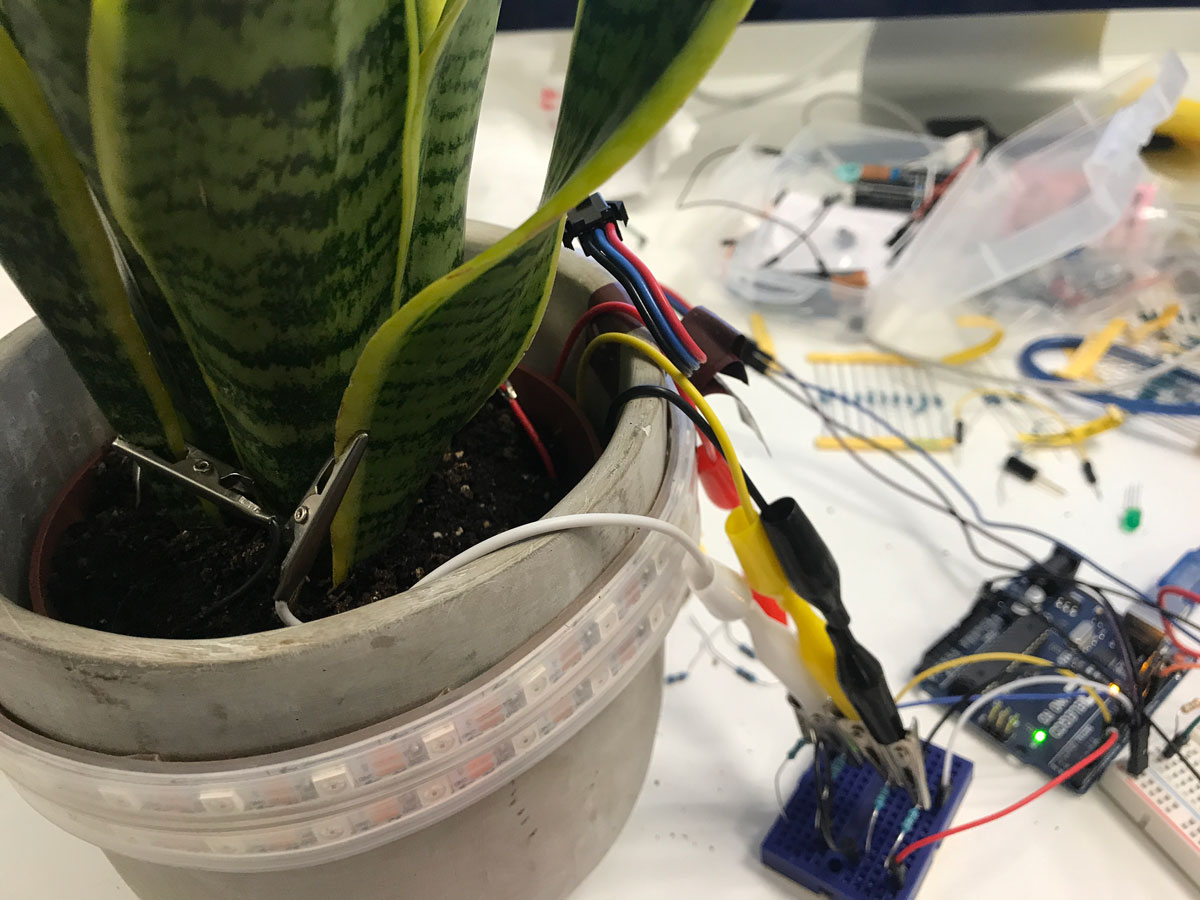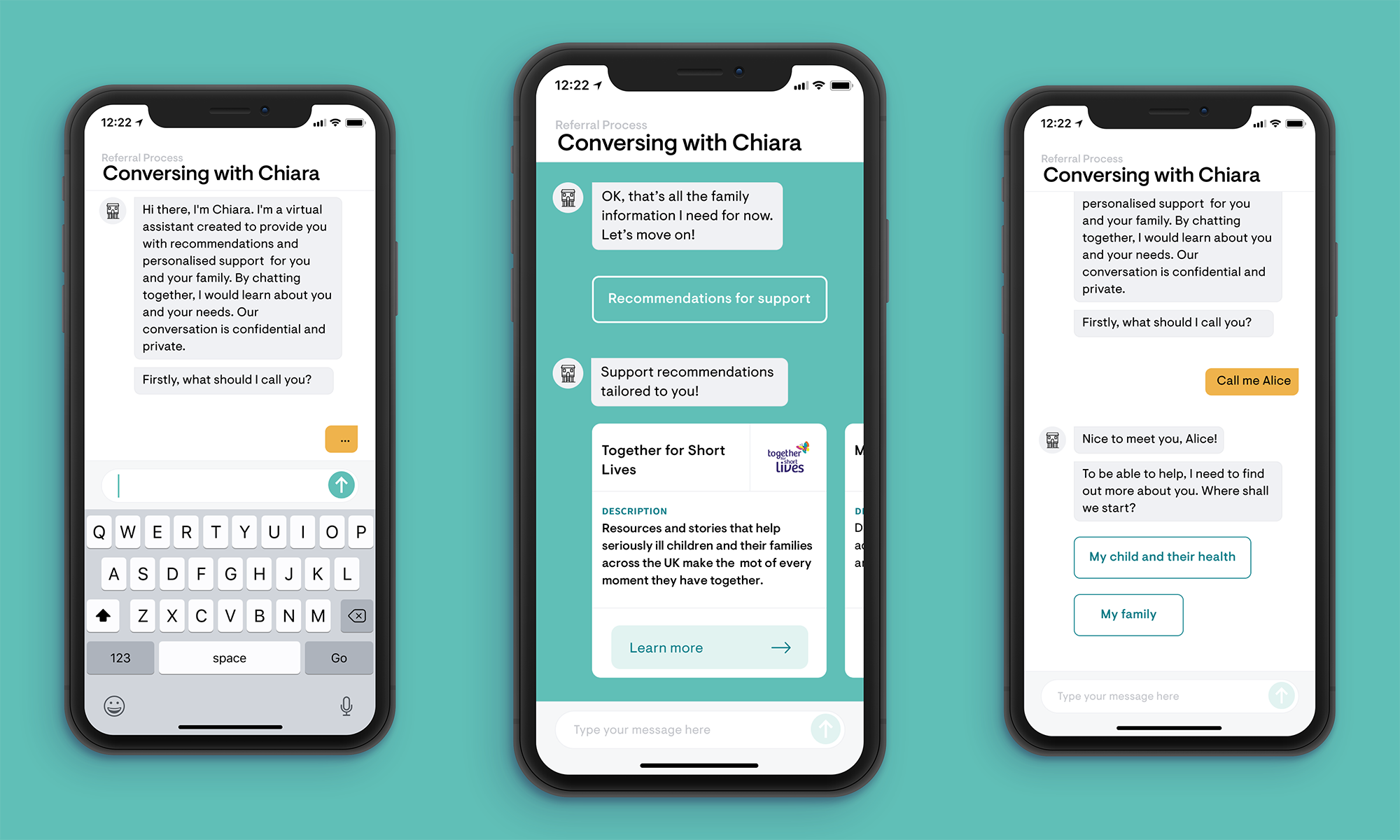
Children’s hospice care
Prototyping products, services and experiences for a new children’s hospice
Every day, around 360,000 babies are born around the world. The large majority will lead long, healthy lives into adulthood. Sadly, a minority experience a very short life due to illness or live with a long-term or life- limiting disease. For these children, palliative care can transform their experience, helping them live with an enhanced quality of life, while also supporting their family and friends.
Paediatric palliative care is an active and total approach to care, from the point of diagnosis, throughout the child’s life, to death and beyond. It embraces physical, emotional, social and spiritual elements and focuses on improving the quality of life of everyone involved. It includes the management of distressing symptoms, care at the end of life and bereavement support. Children’s hospices provide the most comprehensive paediatric palliative care. But globally, there is a chronic lack of them. The demand is high yet hospitals and other organisations have limited resources and capability to offer holistic care required.
Thanks to advances in healthcare more children now survive their illness for longer, and live to adulthood. This means there is a greater need to act systemically about how hospice care is delivered. Developments in technology and changes in care delivery mean that the hospice service itself moves beyond the walls of a building, into the community. With this evolution in mind, what does innovative children’s hospice care look like now and in the near future?
Since 2018, we have been researching and building prototypes that help define the future of children’s hospice care, for a brand new children's hospice being developed by Fondazione Seràgnoli near Bologna in Italy. We believe hospice care that can use human-centred design and technology successfully and meaningfully can transform the way professionals deliver care, and significantly improve the care experience for patients and their families.

The new Children’s Hospice near Bologna
Collaborating with renowned architects Renzo Piano Building Workshop and the design studio Dotdotdot, we have been developing the hospice experience – from the moment a family is engaged with the service, to when they may transition after the death of a child. This unique collaboration ensures that all aspects of the experience – from the physical environment to the integration of clinical and social care – is designed to the highest standard.
So far we have developed two prototypes that respond to the relational, situational and holistic needs of children and families.
Our first prototype – the Connected Garden – recognised the significant importance that gardens hold as a place of refuge, play and relaxation. In our assessment of leading hospices, we found they placed great value on the ability for children, young people and families to be in nature if they wish. The reason is clear: being in nature can take us away from ourselves, invoke feelings of calm and appreciation, and makes us feel happier.
The essence of the building set out by Renzo Piano Building Workshop - to be ‘living amid the trees' - inspired us to consider the outdoor space to be as integral to the hospice service as any of the indoor facilities or medical care. The Connected Garden explored how to fuse the innovative horticultural therapy practices we uncovered through research with meaningful uses of technology, to enable and support accessible use of a garden space for every visitor and patient of the hospice.

Building the prototype plant experience
With our second prototype - Chiara - we created a tangible vision of the future through a 'design fiction' film and a practical expression of applied technology in an intelligent, supportive chatbot that can help families at home to care for their child.
For families caring for a child with a life-limiting or life-threatening illness, life can be incredibly difficult. The experience of parents who may give birth to a child with a congenital or inherited disease, or watch as their otherwise healthy child becomes ill with cancer, can lead them to be isolated, separated from ‘normal’ life. With back-to-back hospital consultations and appointments, there are huge pressures on family cohesion between partners and other children.
For many families, the appearance of a hospice service is a terrifying sight: signalling the end of their child’s life, the end of hope. Yet when they do bravely enter one, many are surprised to find that their life- affirming and supportive environment makes such a positive impact on their lives.

User Interface of the chatbot Chiara
Chiara responds to families’ needs to find appropriate, actionable information and support when they are caring for their child at home. We developed a small segment of the overall ‘guide’ for parents, that showed how an AI-powered chatbot can help bring parents on board to the hospice - providing them with personalised information they might need to get the right support from the right person, at the right time.
With our first prototypes – the Connected Garden and Chiara – we expressed tangible outputs from an expansive set of research, insights, themes, concepts and scenarios. They are by no means an exclusive set of outputs. We know there are many more opportunities to transform children’s hospice care for the better, and continue to develop new prototypes.
We want to ensure that every child and family has access to the services they need, harnessing the best products, services and experiences possible. We believe the future of hospice care is inter-relational, inter-linked and collaborative. We feel that design and technology can improve the essential work of hospices, enabling them to do more, for more people.



